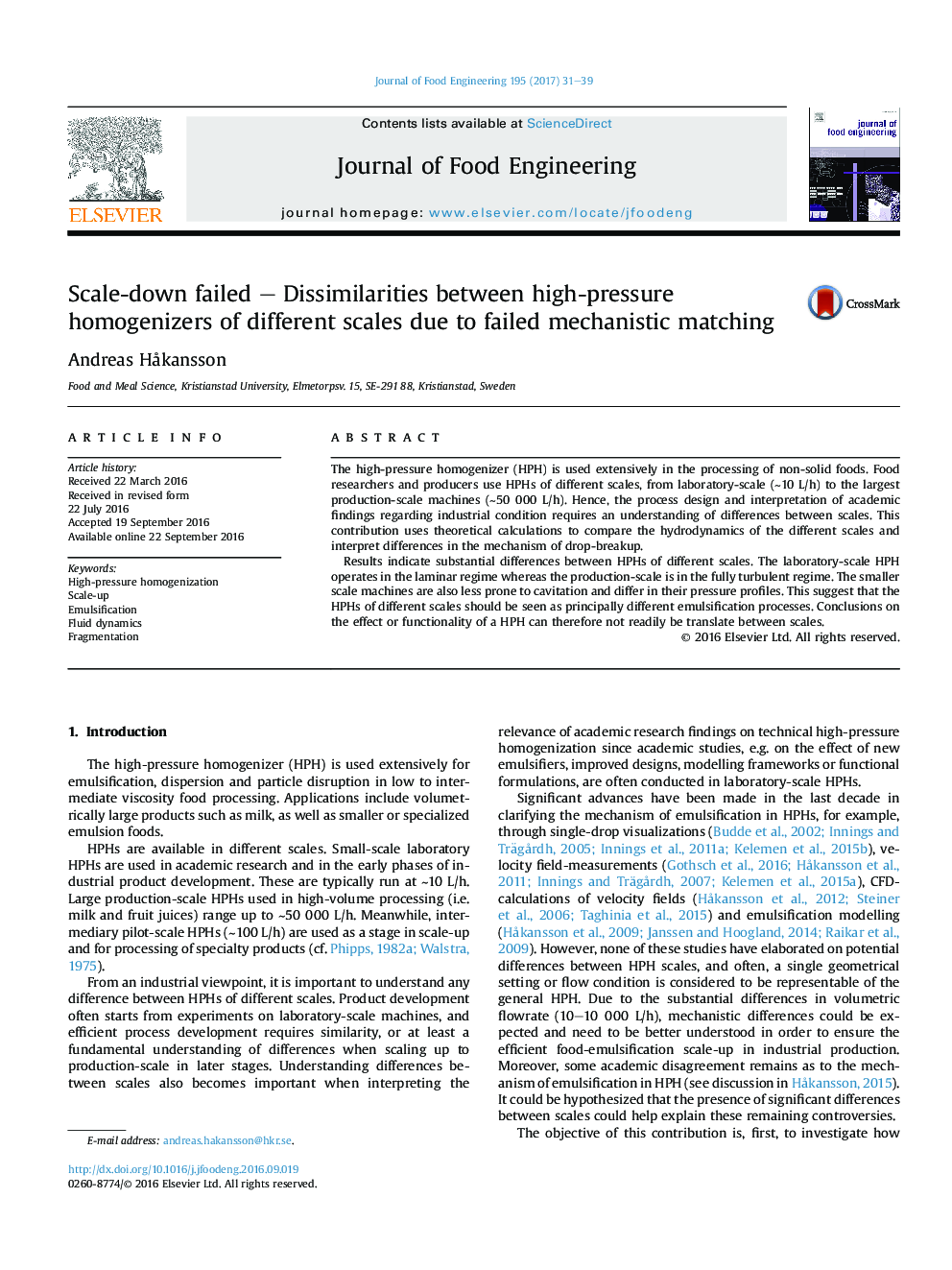| Article ID | Journal | Published Year | Pages | File Type |
|---|---|---|---|---|
| 6477583 | Journal of Food Engineering | 2017 | 9 Pages |
â¢High-pressure homogenizers differ substantially in fluid flow depending on scale.â¢Emulsification in laboratory and production HPHs occur by different mechanism:â¢Production-scale HPHs by turbulence with cavitation.â¢Laboratory-scale HPHs by laminar shear with no cavitation.â¢Conclusions on one HPH scale cannot be transferred to others.
The high-pressure homogenizer (HPH) is used extensively in the processing of non-solid foods. Food researchers and producers use HPHs of different scales, from laboratory-scale (â¼10Â L/h) to the largest production-scale machines (â¼50Â 000Â L/h). Hence, the process design and interpretation of academic findings regarding industrial condition requires an understanding of differences between scales. This contribution uses theoretical calculations to compare the hydrodynamics of the different scales and interpret differences in the mechanism of drop-breakup.Results indicate substantial differences between HPHs of different scales. The laboratory-scale HPH operates in the laminar regime whereas the production-scale is in the fully turbulent regime. The smaller scale machines are also less prone to cavitation and differ in their pressure profiles. This suggest that the HPHs of different scales should be seen as principally different emulsification processes. Conclusions on the effect or functionality of a HPH can therefore not readily be translate between scales.
